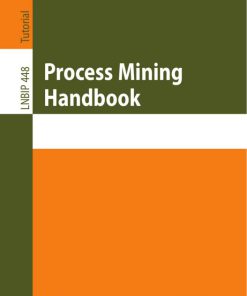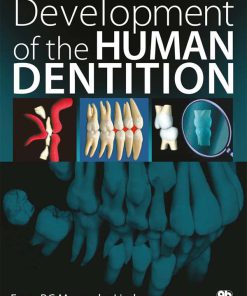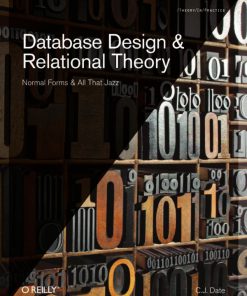Introduction to SQL Mastering the Relational Database Language 1st Edition by Rick F van der Lans ISBN 0321305965 9780321305961
$50.00 Original price was: $50.00.$25.00Current price is: $25.00.
Authors:Rick F. van der Lans , Series:Computer Science [321] , Author sort:Lans, Rick F. van der , Ids:0321305965 , Languages:Languages:eng , Publisher:Addison Wesley Professional , Comments:Comments:Published September 26, 2006, 1056 pages.
Introduction to SQL Mastering the Relational Database Language 1st Edition by Rick F van der Lans – Ebook PDF Instant Download/Delivery. 0321305965 9780321305961
Full download Introduction to SQL Mastering the Relational Database Language 1st Edition after payment

Product details:
ISBN 10: 0321305965
ISBN 13: 9780321305961
Author: Rick F van der Lans
The Classic SQL Tutorial: Fully Updated for Today’s Standards and Today’s Top DatabasesFor twenty years, van der Lans’ “Introduction to SQL “has been the definitive SQL tutorial for database professionals everywhere, regardless of experience or platform. Now van der Lans has systematically updated this classic guide to reflect the latest SQL standards and the newest versions of today’s leading RDBMSs: Oracle, Microsoft SQL Server, DB2, and MySQL. Using case study examples and hands-on exercises, van der Lans illuminates every key SQL concept, technique, and statement. Drawing on decades of experience as an SQL standards team member and enterprise consultant, he reveals exactly why SQL works as it does-and how to get the most out of it. You’ll gain powerful insight into everything from basic queries to stored procedures, transactions to data security. Whether you’re a programmer or DBA, a student or veteran, this book will take you from “apprentice” to true SQL master.
Writing queries and updating data: all you need to know about SELECT
Working with joins, functions, and subqueries
Creating database objects: tables, indexes, views, and more
Specifying keys and other integrity constraints
Using indexes to improve efficiency
Enforcing security via passwords and privileges
Building stored procedures and triggers
Developing with embedded SQL and ODBC
Working with transactions, including rollbacks, savepoints, isolation levels, and more
Optimizing performance by reformulating SQL statements
Using object-relational features: subtables, references, sets, and user-defined data types
Reference section: SQL statement definitions and SQL function lists
Introduction to SQL Mastering the Relational Database Language 1st Table of contents:
-
Introduction to SQL and Relational Databases
- 1.1 What is SQL? Overview and Importance
- 1.2 Relational Database Concepts
- 1.3 Understanding Databases, Tables, and Records
- 1.4 SQL’s Role in Database Management Systems (DBMS)
- 1.5 Key Features of SQL: Structured Query Language
-
Getting Started with SQL
- 2.1 Setting Up a SQL Environment
- 2.2 Introduction to SQL Syntax
- 2.3 Writing Your First SQL Query
- 2.4 Using SQL with Different DBMS (MySQL, SQL Server, Oracle, PostgreSQL)
- 2.5 SQL Query Execution and Result Handling
-
Basic SQL Data Retrieval
- 3.1 The
SELECTStatement - 3.2 Selecting Specific Columns
- 3.3 Using
DISTINCTto Remove Duplicates - 3.4 Sorting Data with
ORDER BY - 3.5 Filtering Data with
WHERE
- 3.1 The
-
Working with SQL Operators and Expressions
- 4.1 Comparison Operators in SQL
- 4.2 Logical Operators: AND, OR, NOT
- 4.3 Pattern Matching with
LIKEand Wildcards - 4.4 Range and Null Value Comparisons with
BETWEENandIS NULL - 4.5 Using Arithmetic Operators and Expressions
-
Joining Tables in SQL
- 5.1 Introduction to Table Joins
- 5.2 Inner Join: Retrieving Matching Records
- 5.3 Left Join, Right Join, and Full Outer Join
- 5.4 Cross Join and Self Join
- 5.5 Joining Multiple Tables in Complex Queries
-
Grouping and Aggregating Data
- 6.1 Using the
GROUP BYClause - 6.2 Aggregate Functions:
COUNT,SUM,AVG,MIN,MAX - 6.3 Filtering Grouped Data with
HAVING - 6.4 Subqueries in
GROUP BYandHAVING - 6.5 Using Window Functions for Advanced Aggregation
- 6.1 Using the
-
SQL Subqueries
- 7.1 What are Subqueries?
- 7.2 Types of Subqueries: Scalar, Row, and Table Subqueries
- 7.3 Using Subqueries in
SELECT,FROM, andWHERE - 7.4 Correlated Subqueries vs. Non-Correlated Subqueries
- 7.5 Best Practices for Using Subqueries
-
Data Manipulation in SQL
- 8.1 Inserting Data with the
INSERT INTOStatement - 8.2 Updating Data Using the
UPDATEStatement - 8.3 Deleting Records with the
DELETEStatement - 8.4 Using Transactions for Data Manipulation
- 8.5 Using
TRUNCATEandDROPfor Removing Data
- 8.1 Inserting Data with the
-
Database Constraints and Integrity
- 9.1 Understanding Constraints:
PRIMARY KEY,FOREIGN KEY,UNIQUE,CHECK,DEFAULT - 9.2 Referential Integrity and Foreign Keys
- 9.3 Enforcing Data Integrity with Constraints
- 9.4 Handling NULL Values and Data Validation
- 9.5 Modifying and Dropping Constraints
- 9.1 Understanding Constraints:
-
Database Design and Normalization
- 10.1 Database Design Principles
- 10.2 Introduction to Normalization: 1NF, 2NF, 3NF, BCNF
- 10.3 Denormalization and Its Uses
- 10.4 Keys in Database Design: Candidate, Primary, Foreign Keys
- 10.5 Indexing for Performance Optimization
-
Advanced SQL Techniques
- 11.1 Using Views to Simplify Queries
- 11.2 Stored Procedures and Functions in SQL
- 11.3 Triggers and Their Uses in SQL
- 11.4 Using Transactions and Isolation Levels
- 11.5 Dynamic SQL and Its Applications
-
Optimizing SQL Queries
- 12.1 Query Optimization Techniques
- 12.2 Analyzing Query Execution Plans
- 12.3 Indexing for Speed: Types of Indexes
- 12.4 Avoiding Common Performance Pitfalls
- 12.5 Advanced Query Optimization Tips
-
SQL and Data Security
- 13.1 Understanding Database Security Concepts
- 13.2 Granting and Revoking Permissions in SQL
- 13.3 User Authentication and Authorization
- 13.4 SQL Injection: Prevention and Best Practices
- 13.5 Securing Data with Encryption in SQL
-
SQL in Practice
- 14.1 Real-World Applications of SQL
- 14.2 Building and Managing a Database System
- 14.3 Using SQL for Data Analysis and Reporting
- 14.4 Working with SQL in Web Applications
- 14.5 Case Studies and Practical Examples
People also search for Introduction to SQL Mastering the Relational Database Language 1st:
introduction to sql
write a detail introduction to sql
datacamp introduction to sql
cs50 introduction to sql
oracle database introduction to sql
You may also like…
eBook EPUB
Development of the Human Dentition 1st Edition by Frans PPGM Van der Linden ISBN 9780867155242












